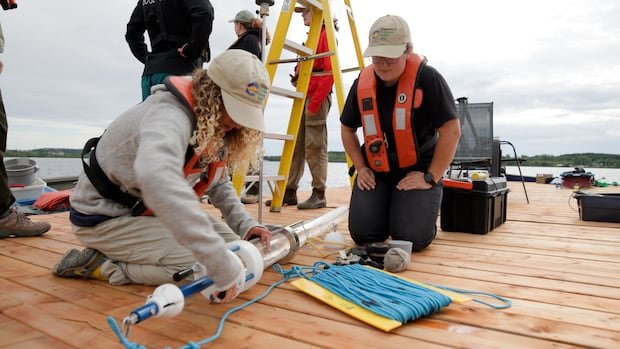Researchers at Laurentian University are delving into historical sediment from lakes in northeastern Ontario to investigate the impact of industrialization on blue-green algae blooms. Mackenzie Hobbs, a Masters student, is leading the study to understand how nutrient levels, particularly phosphorus, have influenced the growth of cyanobacteria in these bodies of water.
Hobbs emphasizes the importance of examining the past to guide future actions, stating that assessing the deviation from natural conditions in lakes is crucial. Excess nutrients like phosphorus create an ideal environment for cyanobacteria to thrive, leading to the formation of harmful blue-green algae blooms that can release toxins affecting humans and animals, prompting the closure of beaches.
By analyzing lake sediment, researchers can trace back over 200 years to a time before industrial activities introduced additional nutrients into the lakes. One key indicator studied is the presence of chironomids, the larval form of flies found in sediment, which offer insights into the oxygen levels in the lakes. Hobbs also looks at diatoms, a type of microalgae thriving in nutrient-rich water, to gauge past phosphorus levels based on the species’ abundance in historical records.
Liz Favot, Hobbs’s supervisor and a Laurentian professor, highlights the potential of identifying lakes with elevated phosphorus levels pre-industrialization for targeted interventions by local authorities. However, Favot’s research reveals that some lakes experiencing blue-green algae blooms have low nutrient levels but are impacted by climate change, as cyanobacteria adapt to warmer water conditions, posing challenges for management efforts.
The study extends to Apsey Lake, a water source for the town of Espanola, where Hobbs’ research could influence land use planning policies near the lake. Joseph Burke, Espanola’s chief administrative officer, notes an increase in blue-green algae blooms since 2015, underscoring the need for proactive measures to safeguard the lake’s health through informed policies and interventions.
This research endeavors to provide valuable insights for communities facing blue-green algae challenges, offering a proactive approach to mitigate the impacts of industrialization and climate change on water bodies.


